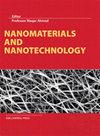Fe/Cu纳米颗粒混凝吸附处理纺织废水的原型:技术经济和规模化研究
IF 3.3
3区 材料科学
Q2 MATERIALS SCIENCE, MULTIDISCIPLINARY
引用次数: 19
摘要
本研究旨在研究由混凝/絮凝、过滤和纳米双金属铁/铜(Fe/Cu)降解和吸附单元组成的中试原型系统对真实纺织废水中化学需氧量(COD)、生物需氧量(BOD)、色度、总氮(TN)、总磷(TP)和TSS的去除效率。在pH 6.0、纳米投加量1.4g/L、接触时间80min、室温搅拌速度250r/min的最佳吸附条件下,以0.5g/L氯化铁为混凝剂,体系的总去除率分别为96、98、82、69、88和97%。吸附等温线表明,COD和TP的去除分别遵循Koble–Corrigan和Freundlich吸附模型,色度的去除分别遵守Koble–Corrigan和Hill吸附模型,TN和TSS的去除分别服从Koble–Corigan和Khan吸附模型。Avrami动力学模型充分描述了COD、BOD、TN和TSS的吸附数据,而伪二阶模型和颗粒内模型分别描述了颜色和TSS去除机理。r2值超过0.98的人工神经网络(ANN)是准确的,并且可以有信心地用于预测目标参数的去除效率。敏感性分析结果表明,初始浓度是对TSS去除影响最大的参数,相对重要性大于25%,而双金属Fe/Cu用量是对所有其他研究参数影响最大的因素,相对重要性超过40%。扩大规模后,拟建系统每立方米的总处理成本为4.5美元,用于将处理后的水重新用于灌溉林木。本文章由计算机程序翻译,如有差异,请以英文原文为准。
A prototype of textile wastewater treatment using coagulation and adsorption by Fe/Cu nanoparticles: Techno-economic and scaling-up studies
This study aims to investigate the efficiency of a pilot prototype system comprising coagulation/flocculation, filtration, and nano-bimetallic iron/copper (Fe/Cu) degradation and adsorption units for the removal of chemical oxygen demand (COD), biological oxygen demand (BOD), color, total nitrogen (TN), total phosphorus (TP), and TSS from real textile wastewater. The total removal efficiencies of the system were 96, 98, 82, 69, 88, and 97%, respectively, using 0.5 g/L ferric chlorides as a coagulant under an optimum adsorption condition of pH 6.0, nano-dosage 1.4 g/L, contact time 80 min, and stirring rate 250 r/min at room temperature. Adsorption isotherms indicated that the removal of COD and TP obeys both Koble–Corrigan and Freundlich adsorption models, removal of color obeys both Koble–Corrigan and Hill adsorption models, and removal of TN and TSS obeys Koble–Corrigan and Khan models, respectively. Avrami kinetic models adequately describe the adsorption data for COD, BOD, TN, and TSS, while pseudo-second-order and intraparticle models described the removal mechanism of color and TSS, respectively. An artificial neural network (ANN) with r2-value exceeding 0.98 is accurate and can be used with confidence in predicting removal efficiencies of the targeted parameters. Sensitivity analysis results showed that the initial concentration was the most influential parameter for TSS removal with relative importance greater than 25%, while the bimetallic Fe/Cu dosage was the most influential factor for all other studied parameters with relative importance greater than 40%. The total treatment cost of the proposed system per m3 after scaling up was found to be US$4.5 for reuse of the treated water for the irrigation of forest trees.
求助全文
通过发布文献求助,成功后即可免费获取论文全文。
去求助
来源期刊

Nanomaterials and Nanotechnology
NANOSCIENCE & NANOTECHNOLOGY-MATERIALS SCIENCE, MULTIDISCIPLINARY
CiteScore
7.20
自引率
21.60%
发文量
13
审稿时长
15 weeks
期刊介绍:
Nanomaterials and Nanotechnology is a JCR ranked, peer-reviewed open access journal addressed to a cross-disciplinary readership including scientists, researchers and professionals in both academia and industry with an interest in nanoscience and nanotechnology. The scope comprises (but is not limited to) the fundamental aspects and applications of nanoscience and nanotechnology
 求助内容:
求助内容: 应助结果提醒方式:
应助结果提醒方式:


